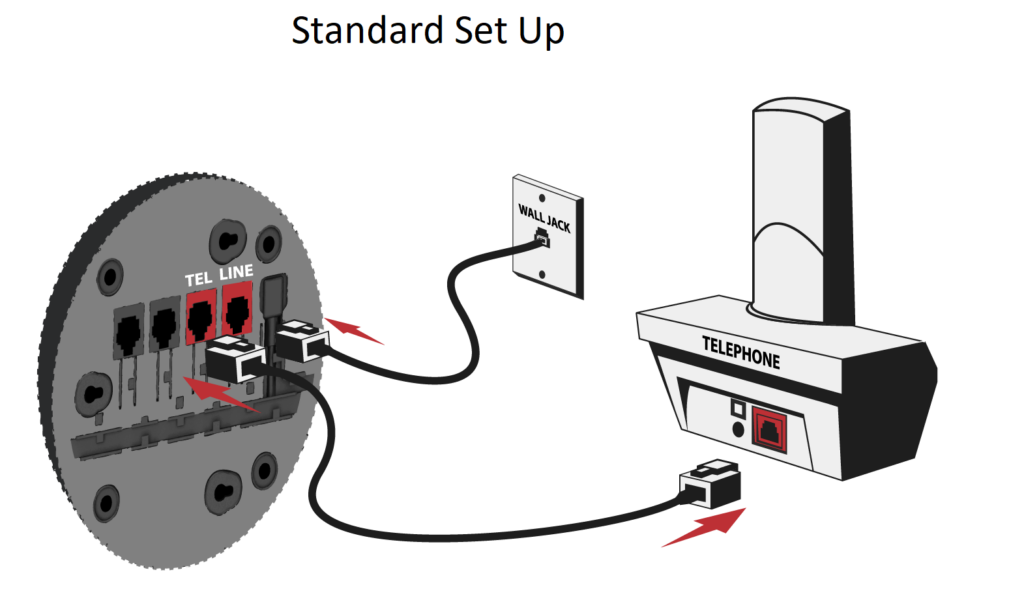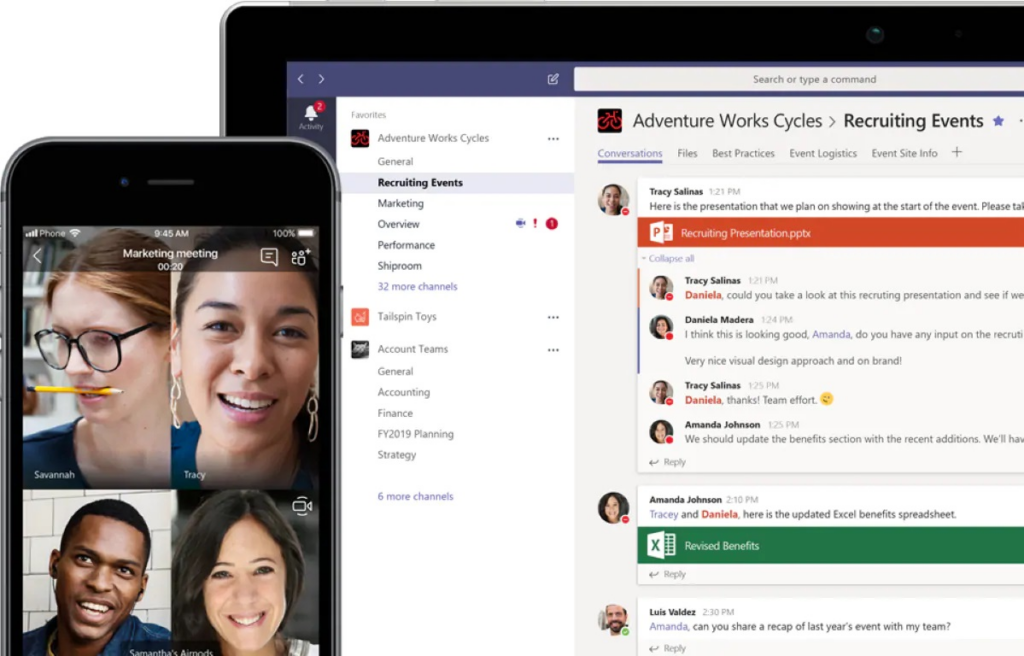The dial tone is a telephony signal we hear when we pick up a telephone handset, indicating the phone line is active and ready for us to dial a number.
It is a continuous tone playing at a frequency of 350 Hz and 440 Hz.
This familiar sound has been around since the early days of telephones and remains an iconic part of telephony even as phone systems evolve.
The dial tone signifies the phone line is ready for action and prompts us to start dialing.
Though many of us take it for granted, the humble dial tone plays an important role in phone calls and continues to be a ubiquitous part of telephony.
This article will explore the history of dial tones, their working, features, benefits, and VoIP phone dial tones in detail.

History of the Dial Tone
1. Early Manual Phone Systems
- The first telephone exchanges opened in 1878, allowing lines to be switched manually
- Callers had to signal an operator instead of hearing a dial tone
- Large switchboards required operators to physically connect calls
2. Introduction of Automated Exchanges
- Manual exchanges were limited in capacity
- Automated exchanges introduced in the 1920s could handle more lines
- Rotary dials allow callers to enter the number directly
- The dial tone was created to indicate the line was available to dial on
3. First Electronic Dial Tone Generators
- Originally produced by harmonic oscillator circuits
- Bell Labs developed an electronic dial tone generator in the 1930s
- A more reliable solid-state oscillator rather than an electromechanical
- Allowed dial tone to be transmitted on lines and stored in exchanges
4. Evolution of Dial Tone Frequencies
- Early dial tones vulnerable to voice frequency interference
- AT&T standardized on 330 Hz and 620 Hz dial tones in North America
- Later revised to 350 Hz and 440 Hz which remains the standard
- Higher frequencies less likely to clash with voice band

How Does Dial Tone Work?
1. Produced by the Telephone Exchange
- Dial tone generated centrally at the telephone exchange
- Analog tone played down the line when the handset is lifted
- Let phone lines be shared until the caller ready to dial
2. Dual Frequency Tone
- Composed of audible sine waves at two distinct pitches
- Mixing two tones makes accidental simulation unlikely
- Harder to mistake random noise for a proper dial tone
3. Transmission to Individual Lines
- Generated tone transmitted on analog lines to the user
- Digital systems synthesize dial tones from stored audio
- VoIP can stream dial tone audio via SIP servers
4. Prompting User to Dial
- Loud enough to hear, but not uncomfortably loud
- Hearing the tone prompts the user to start dialing
- Persists until digits are entered to place a call

Features of Dial Tone
1. Constant Audible Tone
- Produced as soon as the receiver is lifted
- Continues sounding smoothly until dialing occurs
- The indicator line is active and ready for phone number
2. Appropriate Volume
- Loud enough to hear clearly over any background noise
- Quieter than the user’s voice to avoid discomfort
- Dynamic compression can maintain volume on long lines
3. Difficult to Mimic
- Distinctive dual-tone signal is harder to accidentally recreate
- Less chance of false dial tones than in a single-tonne
- Helps prevent users from dialing unless a tone is present
4. Stopping When Dialing Begins
- The tone persists continuously until digits are entered
- Cutoff signals the exchange is now processing the call
- Prevents further dialing once the number is entered
4. Other Audible Signals
- Special information tones can indicate line conditions
- For example, number disconnected or call restrictions
- Let the user know up front if a call cannot be completed
5. Visual Indicators
- Phones may also provide a visual dial tone indicator
- A symbol or flashing light indicating dial tone is present
- Useful for hearing impaired and noisy environments
Benefits of Dial Tone
1. Indicates Line is Active
- The primary benefit is showcasing line is available
- The user knows they can proceed to dial out immediately
- Lack of dial tone usually means line trouble is present
2. Prompt to Begin Dialing
- Tone serves as a simple prompt to input numbers
- Eliminates doubt over when to start dialing
- Subconscious audible cue to initiate a call

3. Avoids False Dialing
- Discourages users dialing without a dial tone
- Greatly reduces the risk of mistakenly dialing on a deadline
- The system only processes numbers when the tone is cut off
4. Provides Reassurance
- Users expect to hear the familiar tone when lifting the receiver
- Reassure them the phone service is working properly
- Useful feedback even before dialing begins
5. Customizable Tones
- Different dial tones are possible for various contexts
- Can indicate internal vs external lines, call restrictions, etc.
- Familiar concept adapted to convey additional info
6. Maintains Traditional User Experience
- Smart devices often lack a handset but may play dial tone
- VoIP recreates dial tone digitally to mimic analog phones
- Consistent experience even on modern systems
VoIP Phone Dial Tones
1. Packetized Audio
- VoIP systems encode audio as data for transmission
- Dial tone audio files sent in data packets like voice data
- Can utilize standard dial tone recordings
2. Flexibility of Digital Tones
- The software can generate any custom audio dial tones
- SIP servers can stream digital dial tones on demand
- More customizable than old closed analog exchanges
2. Latency Considerations
- Additional network delays in VoIP systems
- Potential for slightly laggy dial tone activation
- Jitter buffers smooth out packet arrival timing
4. Maintaining Consistent User Experience
- Important to minimize delays when possible
- Quick dial tone response expected by users
- Mimics traditional analog behavior even over IP
5. Visual Indicators Help
- Progressive VoIP phones include visual dial tone indicators
- Helps compensate for any minor tone delays
- Provides additional visual confirmation of state
Conclusion
The dial tone has been an essential part of telephony for over 100 years, despite the technology evolving significantly.
Its simple purpose remains fundamentally the same – indicating the line is ready for dialing.
The audible tone provides a prompt for users to input a number, avoiding mistakes and reassuring them the system is functioning.
Even with the rise of VoIP and smart devices, dial tones are recreated digitally to maintain a consistent user experience.
This ubiquitous telephony signaling continues to play an important role in phone systems as a familiar cue signaling the line is ready for action.
Frequently Asked Questions (FAQ)
Ques 1: When was the dial tone first introduced?
Ans: The dial tone was first introduced in 1921 with automated telephone exchanges to indicate a line was available for dialing.
Ques 2: What are the standard dial tone frequencies?
Ans: The standard dial tone frequencies are 350 Hz and 440 Hz. This dual-tone makes it less likely to false trigger than a single tone.
Ques 3: Why does a dial tone cut off after dialing a number?
Ans: The dial tone cuts off after dialing a number to signal the phone system is now processing the number you dialed rather than waiting for input.
Ques 4: Do VoIP phones use real dial tones?
Ans: VoIP phones generate dial tones digitally to simulate the sound of an analog dial tone. This maintains a traditional telephony experience.
Ques 5: What does it mean if there is no dial tone on the line?
Ans: No dial tone typically means the phone line is inactive or disconnected. There may be a problem with the connection that should be investigated.






